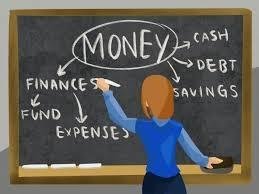Like most people educated in the 1980’s, home economics was a required but underappreciated part of my education. We learned among other things how to sew on a button, make macaroni and cheese and balance my checking account. It turns out these are important skills, especially when it comes to financial literacy and knowing how to keep track of who I owe and what I own.
Notably, this concept of a “household balance sheet” has been used by the U.S. Federal Reserve Bank system for at least the last 75 years to estimate the net worth of American households. For example, Federal Reserve Bank Board of Governors Vice Chairman Philip Jefferson recent remarks at Vassar noted the household balance sheet marks car loans, mortgages, or other borrowing activities as liabilities. Conversely, one’s bank account, house, or stocks in a 401k are relevant assets.
In his writings, past Chairman of the Retirement Income Industry Association, Francois Gadenne, expands the definition of the Household Balance Sheet’s assets to include insurance, availability of programs such as Medicare, and educational levels of the household among other factors.
Using the Fed’s household balance sheet and simple math, the median net worth of the 131 million U.S. households is around $190,000. Digging into the number paints a different picture. The Federal Reserve’s Survey of Consumer Finances and Distributional Financial Accounts provides a breakdown of the average household net worth by income quintile and reports the lowest 20 percent quintile had a median net worth of $6,400.
Today, less than a third of U.S. students are required to take a personal finance course in high school The not-for-profit ProLiteracy.org reports 20% of adult Americans or approximately 48 million people read on a third-grade level or below. According to the Bureau of Labor Statistics, the median weekly earnings for an individual with less than a high school diploma are one third of those with more education.
In an era where many Americans are on the financial precipice and limited exposure to personal financial management, how can artificial intelligence and access to data help consumers shore up their household balance sheet?
Fintech firms are stepping in with AI-enabled tools to fill the education gap. For example, the software provider MX is partnering with industry leaders to merge individuals’ financial data with behavioral science and provide a clear and dynamic step-by-step plan to achieve their financial goals. Other fintech start-ups like Serene utilize AI to identify customers challenged by the complexities of life and generate tailored messages and personalized recommendations for their banks to proactively support them with products and services.
Other ways fintech companies are leveraging customer data to deploy AI to help consumers make better financial decisions include:
- Deploying AI-enabled chatbots that respond instantly to questions in plain language and with minimal financial jargon
- Leveraging AI to guide individuals through key concepts personalized financial planning
- Using AI to improve users’ understanding of their cash flows and help them more effectively predict when they will need more cash or nudge them to save excess funds
- AI is also being deployed to reduce costly inefficiencies that have historically reduced the appetite of traditional banks for just in time micro loans.
Taken together and when used properly, AI-enabled products and services can and eventually will build more financial resilience for our friends, neighbors and small business owners. It would be a mistake to conclude, though, that digital literacy surpasses the importance of financial literacy to strengthening the household balance sheet. While George Washington Carver said, “Education is the key that unlocks the golden door to freedom”, financial security is the hinge that opens the door to a progressively better future for all members of our society.

